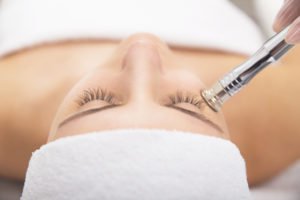
Frequency of maintenance can vary, and is contingent on factors including age, genetics, and amount of hair loss. Findings from the Journal of Cutaneous and Aesthetic Surgery’s study of platelet-rich plasma injections in the treatment of androgenetic alopecia through a one-year period suggests that three platelet-rich plasma (PRP) treatment sessions within 12 months can produce results. After three months, hair density reached a peak, and by the end of the year, it was “significantly increased.”
However, the American Academy of Dermatology (AAD) notes that further regular maintenance treatments may be necessary to maintain the effect of hair restoration PRP as reflected in research data.
PRP is used to restore hair growth. It is injected into the scalp, where it stimulates cells in the follicles to encourage growth and adds volume to existing hairs.
Hair Loss Can Be Caused by Different Elements
The American Academy of Family Physicians reports that hair loss can significantly impact an affected person’s quality of life and self-image.
Some of the variables that can contribute to hair loss include:
- Genetics
- Age
- Trichotillomania, an impulse control disorder
- Overuse of hair products or excessive styling
- Medical procedures, such as chemotherapy
- Severe psychological or emotional distress
Depending on the reason why a person is experiencing hair loss can determine what treatment option will best suit their needs. However, not all procedures work for everyone. Because PRP-based treatments are created from a patient’s own biological material, it can effectively address issues relating not only to hair loss but to other conditions as well.
For a free consultation, call (305) 682-1818
PRP is Used to Treat Many Conditions
A study to assess efficacy of platelet-rich plasma in androgenetic alopecia from the Universitat Internacional de Catalunya explains that PRP has healing properties that can be used in hair restoration.
To prepare PRP, a small blood sample is taken and drawn into a tube containing sodium citrate. The tube is then centrifuged to separate the platelets and stem cells from the blood sample. After the PRP is obtained, it is activated with calcium chloride and injected into the area of thinning hair as a hair restoration treatment.
PRP Studies
The Journal of Cutaneous and Aesthetic Surgery conducted a study over a period of 12 months that monitored the effectiveness of PRP treatment for hair loss in 20 patients.
The results showed:
- Hair loss reduced at three months
- Hair density reached normal levels and peaked at three months
- Significant increase in hair density at six months
- Further increases at 12 months
- No adverse side effects noted
The treatment sessions were administered three times with a gap of 21 days in between each sitting, with a booster session after six months.
Click to contact our specialist today
PRP Hair Growth Treatments May Have Lasting Results
The International Journal of Trichology reports that PRP hair growth treatments typically yield longer-lasting results than prescription drugs.
Other benefits of PRP include:
- Little or no side effects
- Drug-free and surgery-free
- Quick procedure taking no more than an hour for each sitting
Complete a Free Consultation form now
PRP Can Restore Vitality
As well as being an effective, noninvasive procedure for hair loss, one can also benefit from PRP treatment for:
- Facial rejuvenation
- To improve joint health
- For sexual wellness issues
HealthGAINS has established a reputation across America as a leader in age management. Our mission is to help men and women optimize their vitality and accomplish more in life by using pioneering treatments at the forefront of science. Revive the self-confidence that comes with a full head of hair. To speak with a medical professional, contact HealthGAINS to learn more by calling (305) 912-8828.
Call or text (305) 682-1818 or complete a Free Consultation Form








